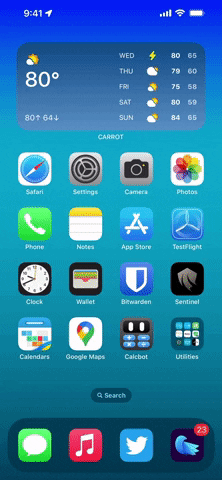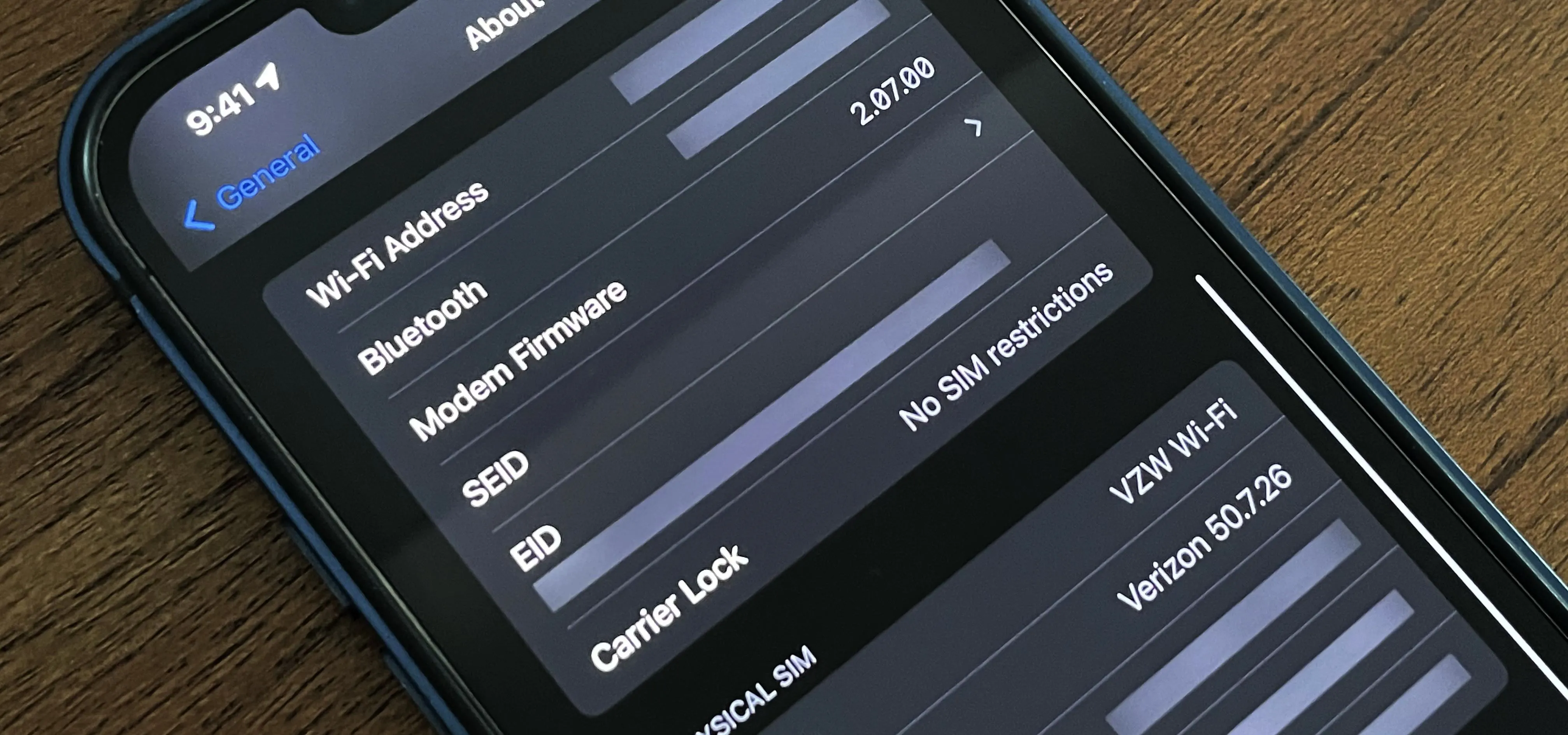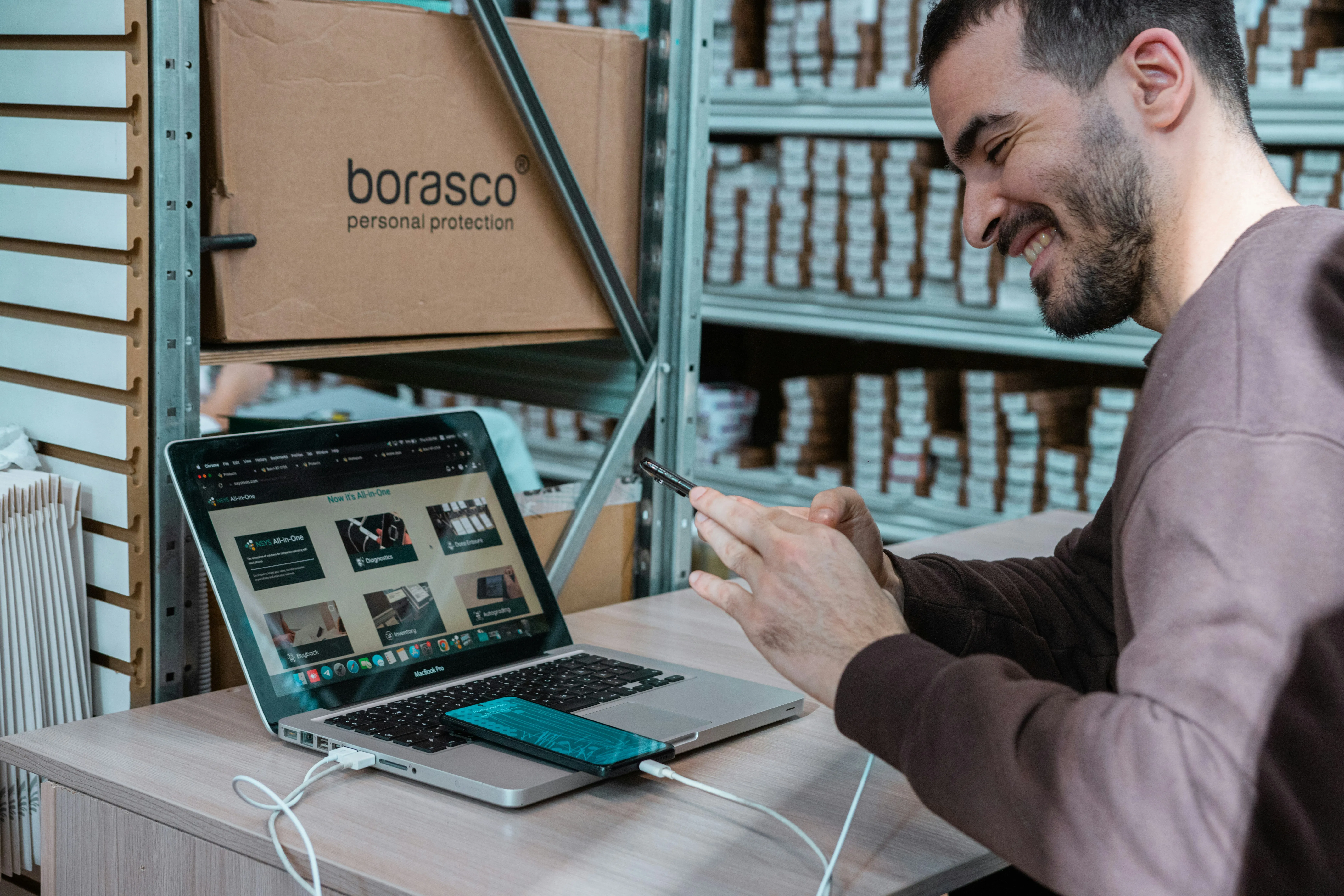If your current cellular provider costs too much, has poor reception in your area, or doesn't support features you'd like to use, switching to another carrier is the obvious move. But can you bring your current iPhone or Android phone?
In most cases, your current smartphone will work just fine on another carrier's network. It's easier to transfer it now than it was when we had to jump through hoops to unlock a carrier-locked cell phone in the U.S. Still, knowing if your phone is unlocked, paid off, and compatible with the network isn't entirely straightforward.
To switch carriers, you may need to pay off your phone with the cellular provider you bought it from, and you should unlock it too. If you purchased your phone from someone other than your carrier — like directly from Apple, Google, or Samsung — it's highly likely that it's ready to switch carriers. Still, you should always double-check to prevent any compatibility hiccups.
Locate Your Phone's IMEI
In some of the other steps below, you'll need to enter your device's IMEI, or International Mobile Equipment Identity, and it's easy to locate. You can find in your phone's settings, but it's even easier to call the dialer code. If you have a dual-SIM model, you should have two IMEIs.
- iOS: Settings –> General –> About –> IMEI
- Android: Setting –> About phone –> IMEI
- Both: In the phone app, call *#06#
You should also be able to find your device's serial number with the dialer code and via the "About" menu in your Settings app. You may need to know that too.




Ensure Your Phone Is Compatible
Before performing any of the more complicated steps below, you should check if your iPhone or Android phone will work with the carrier you want to switch to. Generally, newer devices work with most major wireless carriers, but it depends on the network.
AT&T and T-Mobile are GSM networks, so your phone would need to support that network type. Verizon and U.S. Cellular are CDMA networks. Also, your phone must support the carrier's network technology (5G, 4G LTE, etc.) and network frequencies (bands).
To check if your phone is compatible with a mobile network provider, visit:
- AT&T compatibility list (match your model number)
- T-Mobile compatibility checker (enter your IMEI)
- U.S. Cellular compatibility checker (enter your IMEI)
- Verizon compatibility checker (enter your model, seller, and IMEI if needed)
Mobile virtual network operators (MVNOs) like Boost Mobile, Consumer Cellular, Google Fi, and U.S. Mobile all piggyback off one or more of the four major U.S. carriers and their network technology.
- Boost Mobile compatibility checker (enter your IMEI)
- Consumer Cellular compatibility checker (enter your IMEI)
- Cricket Wireless compatibility checker (enter your IMEI)
- Google Fi compatibility checker (enter model and seller or purchase location)
- Metro by T-Mobile compatibility checker (enter your IMEI)
- Mint Mobile compatibility checker (enter your IMEI or model)
- Page Plus Cellular compatibility checker (enter your IMEI)
- Spectrum Mobile compatibility checker (enter your IMEI and device manufacturer)
- Straight Talk compatibility checker (enter your current carrier, ZIP code, and IMEI if needed)
- U.S. Mobile compatibility checker (enter your model or IMEI)
- Visible compatibility checker (enter your OS, then your IMEI or model and current carrier)
- Xfinity Mobile compatibility checker (enter your model, current carrier, and IMEI)
Ensure It's Paid Off and Meets Time Requirements
If you purchased your smartphone from your carrier and still own money, you may not be able to use the phone with a different carrier until you pay off the balance. If you didn't purchase your phone from the carrier, skip to Step 4.
AT&T and T-Mobile make you pay off the rest of the phone before you can move it to another carrier, but it also needs to be on their networks for at least 60 or 40 days, respectively. Even if you paid for the phone in full at the time of purchase, you would still have to wait 40–60 days on the network.
However, Verizon automatically unlocks phones after 60 days of being active on its network, even if you're still paying off the phone. As long as you continue making device payments, you're free to switch carriers. U.S. Cellular will auto-unlock phones after 120 days on its network, but it may be able to do it sooner if you paid off your device or you're in the military and are being deployed.
You can check if you owe any balance on the phone in your account online:
- AT&T:Web | Android | iOS
- T-Mobile:Web | Android | iOS
- U.S. Cellular:Web | Android | iOS
- Verizon Wireless:Web | Android | iOS
If you do not have an account or don't know the password, you can always give them a call with the phone numbers in Step 4 (option 4).
Something to Be Careful With
If you purchased your phone through a carrier promotion and are looking to pay off the phone, you may have to pay the phone off in full without the promotional discount. For example, if the carrier had a $700 off deal if you trade in your phone, and you bought a phone that is $1,000, you might have to pay the remainder of the total $1,000 and not the $300.
That happens when your phone carrier requires you to make 24- or 36-month payments, giving you 24 or 36 months' worth of credits on your phone bill, essentially creating a 24- or 36-month contract. If you break the contract, you must also pay the carrier's part.
The good news is that T-Mobile, Verizon, and AT&T will pay you to switch to them with a prepaid card. These prepaid cards usually pay off most if not all of your remaining balances on your current contract. However, sometimes the carrier will similarly keep you for 24–36 months.
Check if Your Phone Is Unlocked
Now that you know your device is compatible with the new carrier's network and is eligible to be unlocked by your current provider, you should check if your smartphone is actually unlocked. When a smartphone is locked, it means it's locked into using your existing mobile service provider's network, so throwing in a SIM card for a different network won't work.
Since 2014, the CTIA Consumer Code for Wireless Service has required that carriers follow six standards when it comes to device unlocking, and two of them are worth pointing out:
- Postpaid Unlocking Policy. Carriers, upon request, will unlock mobile wireless devices or provide the necessary information to unlock their devices, for customers and former customers in good standing and individual owners of eligible devices after the fulfillment of the applicable postpaid service contract, device financing plan or payment of an applicable early termination fee.
- Prepaid Unlocking Policy. Carriers, upon request, will unlock mobile wireless devices no later than one year after initial activation, consistent with reasonable time, payment, or usage requirements.
As seen in Step 2, carriers set their own rules for when your device is eligible to be unlocked, but they need to meet the minimum requirements in the unlocking policies above. Some will automatically unlock your phone after a set period. If they don't, they at least must let you know that your device is eligible to be unlocked when you meet the eligibility requirements.
Try any of the options below to check your device's lock status.
Check in Your Phone's Settings
The easiest way to check if your smartphone is carrier-locked or unlocked is via your device settings, which should clearly state the status.
iPhone
On iOS 14 or newer, go to Settings –> General –> About, then scroll to "Carrier Lock." If it says "No SIM restrictions," your iPhone is unlocked. However, some users have reported that the "Carrier Lock" menu item is inaccurate or doesn't even exist. If that's what you're experiencing, try one of the other options below.




Android
It's a little more complicated to check if your Android phone is unlocked because it depends on the Android version, the OEM (Original Equipment Manufacturer), and the current carrier. T-Mobile actually makes it very easy to see the network lock status on most LG, Motorola, OnePlus, and Samsung phones.
For example, on a Samsung Galaxy with the latest One UI version, you can go to Settings –> Connections –> More connection settings, and you'll see a "Network unlock" option. Tap that, and it should tell you right away if it's locked or unlocked. If it's locked, you can request to unlock it right from here, so you can skip Step 5 below!




Here are a few of the locations for the lock status on other devices sold by T-Mobile:
- LG: Settings –> Network & internet –> Mobile networks –> Network unlock
- Motorola: Settings –> About phone –> Device unlock
- OnePlus: Settings –> Wi-Fi & internet –> SIM & network –> Advanced or Network Unlock
For devices not currently using T-Mobile, we have to make some assumptions about what some of the settings say. Try going to any of the preferences below, and if you see multiple carriers, your phone is most likely unlocked.
- Settings –> Connections
- Network & Internet –> Mobile network
- Cellular network –> Advanced –> Choose Network
- Cellular network –> Advanced –> Automatically select network
Alternatively, you can enable the developer options on your Android phone to access the "OEM unlocking" switch." While OEM unlocking differs from network unlocking, if your device is network locked, you'll see a warning like "Unavailable on carrier-locked devices," which means yours is locked. If you don't see "OEM unlocking," it's likely locked.
Use an Online IMEI Checker
You can also use an external IMEI checker online, but while many of them will tell you information about your phone, they may leave out the SIM lock status, prompting you to pay to get that information. IMEI 24 is one of those. However, I've also used IMEI Check for an iPhone, and it was free to check as long as you have the serial number and IMEI (or both IMEIs for dual-SIM models).
Insert a New SIM Card
This option is quick but only helpful if you have another SIM card on hand from a different cellular provider. Turn off your smartphone, open the SIM card tray, remove your current carrier's SIM card, and place a SIM card from a different carrier in its place. Close the tray and turn your phone back on.
If it's locked, you may get a warning saying so, such as "SIM Not Valid," "SIM Not Supported," or "SIM Not Recognized." However, it may be unlocked if you see your carrier's logo in your status bar. Confirm by trying to make a phone call to see if the call goes through. If it does, it's most likely unlocked.
Call Your Original Cellular Carrier
Whatever cellular provider your smartphone is locked to, there's a number you can call to find out more information about your device's lock status. It's slightly aggravating because you may have to deal with a hold time, but it's the only option if the other options don't work.
- AT&T Support:1-800-331-0500
- T-Mobile Support:1 (800) 937-8997 or dial 611 from your T-Mobile phone or 1-877-746-0909 from another phone
- U.S. Cellular Support:1-888-944-9400
- Verizon Support:1-800-922-0204
Unlock Your Phone (If It Isn't Already)
If your phone isn't currently unlocked, you'll need to unlock it. You may be able to request an unlock via your device's settings or the carrier's app. If not, you may have to use the carrier's web app or call them. Ensure you do not cancel service if you want to port your phone number to the new carrier.
- AT&T: Use the Device Unlock Portal. (Device unlock policy info.)
- T-Mobile (iPhone): Contact support at 1-800-937-8997 or dial 611 from your T-Mobile phone or 1-877-746-0909 from another phone. (Device unlock policy info.)
- T-Mobile (LG): Go to Settings –> Network & internet –> Mobile networks –> Network unlock –> Continue –> Permanent Unlock. (Device unlock policy info.)
- T-Mobile (Motorola): Go to Settings –> About phone –> Device unlock –> Continue –> Permanent Unlock. (Device unlock policy info.)
- T-Mobile (OnePlus): Go to Settings –> Wi-Fi & internet –> SIM & network –> Advanced or Network Unlock –> Permanent Unlock. (Device unlock policy info.)
- T-Mobile (Samsung): Go to Settings –> Connections –> More Connection Settings –> Network Unlock –> Permanent Unlock. (Device unlock policy info.)
- T-Mobile (Other Android Brand): Use the preinstalled Device Unlock app if available, try the steps from another Android brand above, or contact support at 1-800-937-8997 or dial 611 from your T-Mobile phone or 1-877-746-0909 from another phone. (Device unlock policy info.)
- U.S. Cellular: Contact support at 1-888-944-9400. (Device unlock policy info.)
- Verizon: Contact support at 1-800-922-0204. (Device unlock policy info.)
For MNVOs:
- Boost Mobile: Contact support at 1-833-50-BOOST (1-833-502-6678). (Device unlock policy info.)
- Consumer Cellular: Contact support at 1-888-345-5509. (Device unlock policy info.)
- Cricket Wireless: Sign in to your account to request unlocking, use the myCricket app on some Android models, contact support at 1-800-274-2538 or via chat. (Device unlock policy info.)
- Google Fi: All phones are unlocked by default. (Device unlock policy info.)
- Metro by T-Mobile: Go to the "Permanent Unlock" option in your Settings app (see T-Mobile devices above) or contact support at 1-888-863-8768. (Device unlock policy info.)
- Mint Mobile: Contact support at 1-213-372-7777. (Device unlock policy info.)
- Page Plus Cellular: Contact support at 1-800-550-2436. (Device unlock policy info.)
- Spectrum Mobile: Contact support at 1-833-224-6603. (Device unlock policy info.)
- Straight Talk: Contact support at 1-888-442-5102 or visit its Unlocking Compliance webpage. (Device unlock policy info.)
- US Mobile: Contact support at 1-878-205-0088 or via chat or use its Unlock tool. (Device unlock policy info.)
- Visible: Contact support via chat. (Device unlock policy info.)
- Xfinity Mobile: Contact support via chat. (Device unlock policy info.)
When you request that your phone be unlocked, carriers have two business days to:
- Unlock the device, or
- Initiate a request to the OEM to unlock the device, or
- Explain why the device does not qualify for unlocking, or
- Explain why they need additional time to process the request.
What's Next?
Now that you know your phone is unlocked and paid off, you can switch to the new carrier. You'll want to make sure you do not cancel with your current carrier so you can keep your phone number. Contact your new carrier's support or visit their website for instructions on porting your number over. If you want a new phone number, you can cancel and switch right away.
Cover photo and screenshots by Daniel Hipskind/Gadget Hacks

























Comments
Be the first, drop a comment!